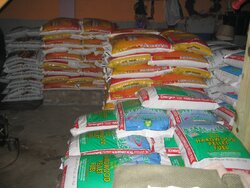How is it physically possible for heat output (I know, BTUs) to vary so dramatically between different pellets? They're all made with basically the same process. I'm sure there are variables in type of wood used, binder materials, moisture content, etc., but I still don't see how the output differences can be that drastic. I posted a while ago that Trae Heats gave me almost NO heat output; as a newbie I was surprised that low an output was even possible. So yesterday I burn a few bags of North American pellets from Dopey Depot, and literally the same thing, almost no heat. Woke up with the 2nd floor feeling on the cool side. Dislike them so much I'm returning the remaining 9 bags to get my cash back. Bought my first ton of Chow today from HD in Bristol. $249, no tax. Been burning Chow almost exclusively so far. I liked the FSUs too. With my Breckwell on 3 of 5 settings, I can't sit within 5' of the front of the stove with Chows burning, too hot. Ran the N. Americans all night long on 3 and was not impressed. So what's the scientific explanation for why some pellets suck and other's don't... LOL.
LOL.
 LOL.
LOL.


